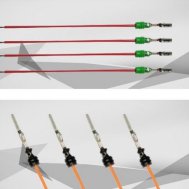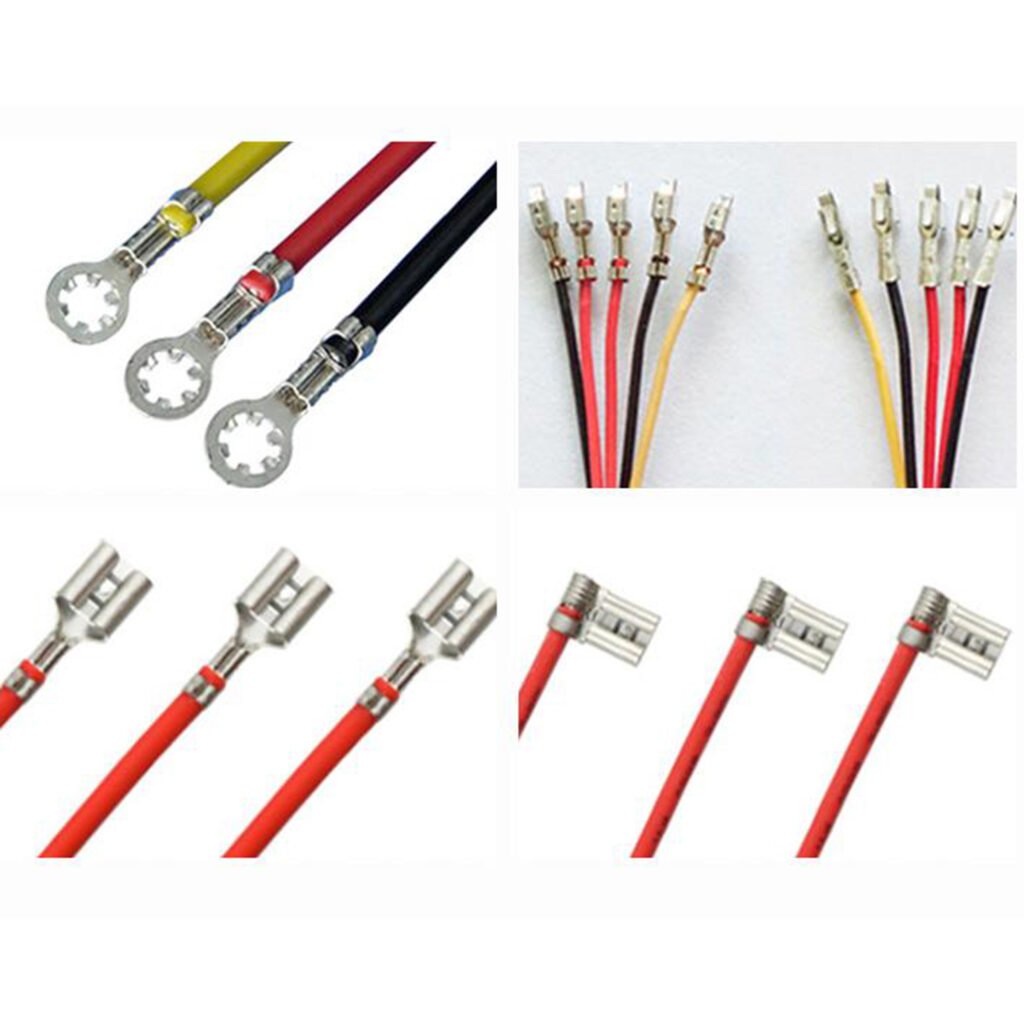Talk about the metal wire of automobile cable harness (Part 1)
-
 @
Mark Ji
@
Mark Ji
- Last updated
Table of Contents
The function of wire harness is expanded from ordinary signal transmission to data transmission.
The limitations of wire transmission signals increasingly hinders the development of the whole vehicle, so the extensive use of optical cable will usher in the third leap in the manufacturing technology of automobile wire harness. Optical cable has the advantages of fast transmission speed, large capacity, small volume, strong confidentiality, good anti-interference and so on.
It will soon become an important optimal material for automobile data processing and exchange in the future, making the power and signal distribution system enter a new historical stage of development.
Metal materials for automobile wiring harness cables
Automobile wire harness refers to the components in which the contact terminals (connectors) made of copper are crimped with wires and cables, then the insulator or metal shell is crimped on the outside, and the wiring harness is bundled to form a component.
Wire harness is widely used in automobiles, household appliances, computers and communication equipment, various electronic instruments and so on.
Automobile wires, also known as low-voltage wires, are different from ordinary household wires.
The ordinary household wire is a copper single core wire with a certain hardness.
The automobile wires are copper flexible wires, some of which are as thin as hair, and several or even dozens of soft copper wires are wrapped in plastic insulated pipes (polyvinyl chloride), which are soft and not easy to break.
The material requirements of automobile wire harness are very strict, including its electrical performance, material emissivity, temperature resistance and so on, which are higher than those of general wire harness, especially those related to safety, such as direction control system, brakes and other important components. The requirements are more stringent.

The metal materials used for automobile cables are as follows:
Copper: It’s electrical conductivity is second only to silver, and its thermal conductivity is second only to gold and silver. It features corrosion resistance, non-magnetic, good plasticity, easy welding, and a wide range of applications.
Copper alloy is mainly to improve the wear resistance, corrosion resistance and mechanical and physical properties of copper.
Silver: Its metal has the highest electrical conductivity and thermal conductivity, featuring good corrosion resistance and oxidation resistance, and easy welding. It is mainly used in plating. It is mainly used as high temperature resistance wire and high frequency communication cable conductor.
Aluminum: Its electrical conductivity is second only to silver, copper and gold; featuring good thermal conductivity, good corrosion resistance, general mechanical strength, good plasticity, and low specific gravity.
The disadvantage is that the tensile strength is low and it is not easy to weld.
Aluminum alloy is mainly to improve the mechanical strength, heat resistance and weldability of aluminum.
Gold and nickel: They are used as high temperature resistance wire.
Iron (steel): It is a strengthening material often used as composite conductors, such as steel-cored aluminum strands, copper-clad steel, aluminum-clad steel wires, etc.
Zinc: It is used as a coating for steel wire, steel strip or iron conductor to prevent corrosion.
Tin: It is used as the coating of steel wire or copper wire to prevent corrosion and is beneficial to the welding of copper wire.
Types, specifications and standards of automobile wiring harness cable
Automobile wiring harness cable has a great application in automobile.
What kind of wire the automobile wiring harness cable chooses plays an important role in the performance of the automobile harness.
To design a good wire harness, there is no room for carelessness in the selection of wire types.
Wires can be divided into electronic wires and cable according to their nature.
According to the standard: There are UL/CSA, CCC, VDE, PSE, etc..

The common specifications of wires in automobile wire harness are with nominal cross-sectional area of 0.5 mm², 0.75 mm², 1.0 mm², 1.5 mm², 2.0 mm², 2.5 mm², 4.0 mm², 6.0 mm² and other sizes, each of which has allowable load current values, which are used for wires with different power consumption equipment.
For example, 0.5 mm² wire is suitable for instrument lights, indicator lights, door lights, top lights, etc.; 0.75 mm² wire is suitable for license plate lights, front and rear small lights, brake lights, etc.; 1.0 mm² wire is suitable for turn lights, fog lights, etc.; 1.5 mm² wire is suitable for headlights, loudspeakers, etc.. Main power wires, such as generator pivot wire, iron wire and other required 2.5~4 mm² wires.
This only means that as far as ordinary cars are concerned, the key depends on the maximum current value of the load. For example, the iron wire of the storage battery and the positive power cord are used alone, and their wire diameters are relatively large, at least more than a dozen square millimeters. These “giant” wires will not be incorporated into the main wire harness.
The types of wires commonly used in automobile wire harness are Japanese standard (AVSS, etc.), national standard (QVR), German standard (FLRY), American standard and so on.
AVSS wire is characterized by thin insulation and good flexibility; QVR is characterized by thick insulation, soft and good ductility; German standard wire insulation is thinner and flexible; American standard wire insulation is generally thermoplastic or thermoset elastomer, and processed by irradiation process.
The appropriate type of wire can be selected according to the needs of users and different working environments.
The wires commonly used in automobile wire harness usually use multi-strand copper wires, and the insulating skin is PVC insulating material.
The wire for wiring harness should have the characteristics of temperature resistance, oil resistance, wear resistance, waterproof, anti-corrosion, anti-oxidation, flame retardant and so on.
The environment and function should be fully taken into account in the selection of wires for automobile wiring harness.
For example, the ambient temperature around the engine is high, and there are many corrosive gases and liquids.
Therefore, the high temperature, oil, vibration and friction resistant wires must be used; the wires on the lid of the luggage compartment must maintain their elasticity at low temperature, so the cold elastic wires should be selected to ensure their normal operation; the wires on the automatic transmission must be resistant to high temperature and hydraulic oil, and their temperature stability should be good; shielded wires should be used for weak signal sensors, such as knock sensor, crankshaft position sensor, ABS wheel speed sensor, etc.
The inner wires of the door requires high bending resistance.

